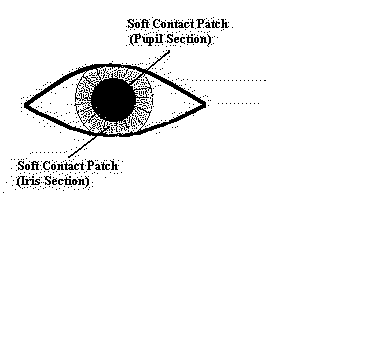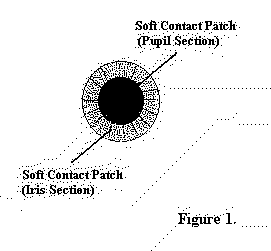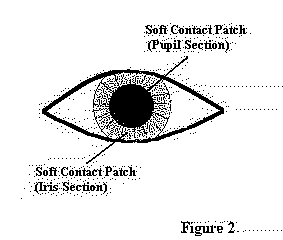Soft Contact Patch for Treatment of Amblyopia
a soft contact and amblyopia technology, applied in the field of amblyopia treatment, can solve the problems of inability to develop normally the brain's vision system of the eye, incompatible binocular visual input, and impaired vision
- Summary
- Abstract
- Description
- Claims
- Application Information
AI Technical Summary
Benefits of technology
Problems solved by technology
Method used
Image
Examples
Embodiment Construction
[0013] The present invention is directed at using a specially designed soft contact patch with an opaque or tinted pupil section and either transparent or colored iris section for improving visual acuity of an individual in which the loss of acuity is the result of a “lazy eye” or amblyopia. The condition known as amblyopia or lazy eye can be overcome by exercising the eye according to the method of the invention. Specially designed soft contact patch for treating amblyopia (lazy eye) in children and possibly adults is disclosed. A soft contact patch designed such that its pupil section is opaque and essentially black or tinted dark and its iris section surrounding the pupil section is large enough to snugly fit inside the eye under the eyelid like a soft contact lens and is either transparent or colored to show or match the natural color of the eye or the iris, and it is perforated and porous to allow oxygenating the iris and the sclera, so that for selected portions of time the st...
PUM
 Login to View More
Login to View More Abstract
Description
Claims
Application Information
 Login to View More
Login to View More - R&D
- Intellectual Property
- Life Sciences
- Materials
- Tech Scout
- Unparalleled Data Quality
- Higher Quality Content
- 60% Fewer Hallucinations
Browse by: Latest US Patents, China's latest patents, Technical Efficacy Thesaurus, Application Domain, Technology Topic, Popular Technical Reports.
© 2025 PatSnap. All rights reserved.Legal|Privacy policy|Modern Slavery Act Transparency Statement|Sitemap|About US| Contact US: help@patsnap.com



